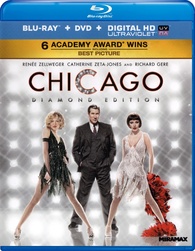Dolby intends to have Dolby Cinema function as a real ''premium" movie-going experience. But, yes, Dolby must first sell movie theater operators and movie studios on the idea for it to get anywhere.
Dolby Cinema will follow a formula somewhat similar to IMAX' approach. Dolby (and perhaps partnering movie studios) would pay for the expensive laser projection and audio hardware going into the theater. The movie theater operator would provide the building. Dolby and its partners would take a cut of the box office money to pay for sound/vision hardware.
Some aspects of who would pay for what are unclear. Would the theater operator have to pay for the fancy signage and huge animated video wall in the auditorium's entrance? If that wall is a LED-based "jumbotron" display it could cost hundreds of thousands of dollars on its own, particularly if it is high resolution.
At any rate, Dolby has to do something to keep its brand visible in movie theaters.
A movie-goer must deliberately go out of his way to find theaters equipped with Dolby Atmos or Dolby 3D. Hollywood studios are doing next to nothing to promote those formats. When you look at a movie poster these days all you see is IMAX and RealD. Dolby Cinema would change that and get the Dolby brand visible once again on movie posters, trailers, etc.
It's still going to be a challenge to get movie productions on board with Dolby Cinema.
Not all that many movies are mixed in Dolby Atmos and of the ones that are released with Dolby Atmos not many of those have mixes which do much with the format. I've seen a few Atmos movies were the track didn't sound much different than a standard 5.1 or 7.1 track. Really "immersive" mixes like the Atmos mix of
Gravity are more rare.
I think it's going to be an even bigger challenge getting the Dolby Vision aspect of Dolby Cinema widely supported. I don't like them using "HDR" when describing it. I associate HDR with all those garish, surreal images I see coming from the still photography world. Imagery in Dolby Vision must still look natural. On top of that, it still has to look like a film-originated movie. The top complaint about 48fps HFR shows is that it looks like videotape from a soap opera or the 6 o'clock news. Lots of movies these days have very muted, dreary color schemes. Sometimes they look like a view through a urine filled fish tank. How will Dolby Vision fit in with that? Wider dynamic range may also mean a significantly bigger color bit depth, both in shooting and post production. That's going to raise production costs.
Quote:
|
I don't get what that mini-site is about, since Dolby does not build theatres. It showed a theatre rendering with acoustic panels, but without any surround or ceiling speakers and then it presented Atmos incorrectly, since it showed lines emanating from the screen to the ceiling and surrounds, instead of the ceiling and surrounds emanating to the seats.
|
The speakers will be hidden from view behind all those angled acoustic panels. I don't mind the idea from an aesthetic viewpoint. Some theaters and private screening rooms have been hiding the surround speakers for many years. A Dolby Atmos system has LOTS of surround speakers, probably enough to create at least some issues with sound wave reflections. The Dolby Cinema concept tries to eliminate as much of that as possible.
BTW, the one thing I really do not like in the Dolby Vision concept: the floating screen. It has no masking, much less no curtains. Something shot in HD aspect ratio (1.77:1) or flat (1.85:1) may fill the screen. But 'scope 2.39:1 movies will be letter-boxed, just like on the TV set at home. The screen even looks like the display from one of those late 1970's era projection screen TV sets. I would like the Dolby Cinema concept more if it had a proper masking and curtain setup for the screen, and if the room wasn't so barren and stark looking.
IMHO, Warren Theaters has a better idea of just what the movie-going public wants in theater aesthetics. They're about to open a new $45 million multiplex in Broken Arrow, OK just outside of Tulsa. The two biggest "Grand Infinity" houses have ornate decor and premium balcony seating for adults age 21 and up. Those two houses will be the first in the United States to utilize 4K laser projectors full time to the movie-going public. The sound systems in all 18 screens are THX certified. The Grand Infinity houses will be equipped with Dolby Atmos, wired and amplified in its maximum 64-channel configuration.




























 Hybrid Mode
Hybrid Mode
